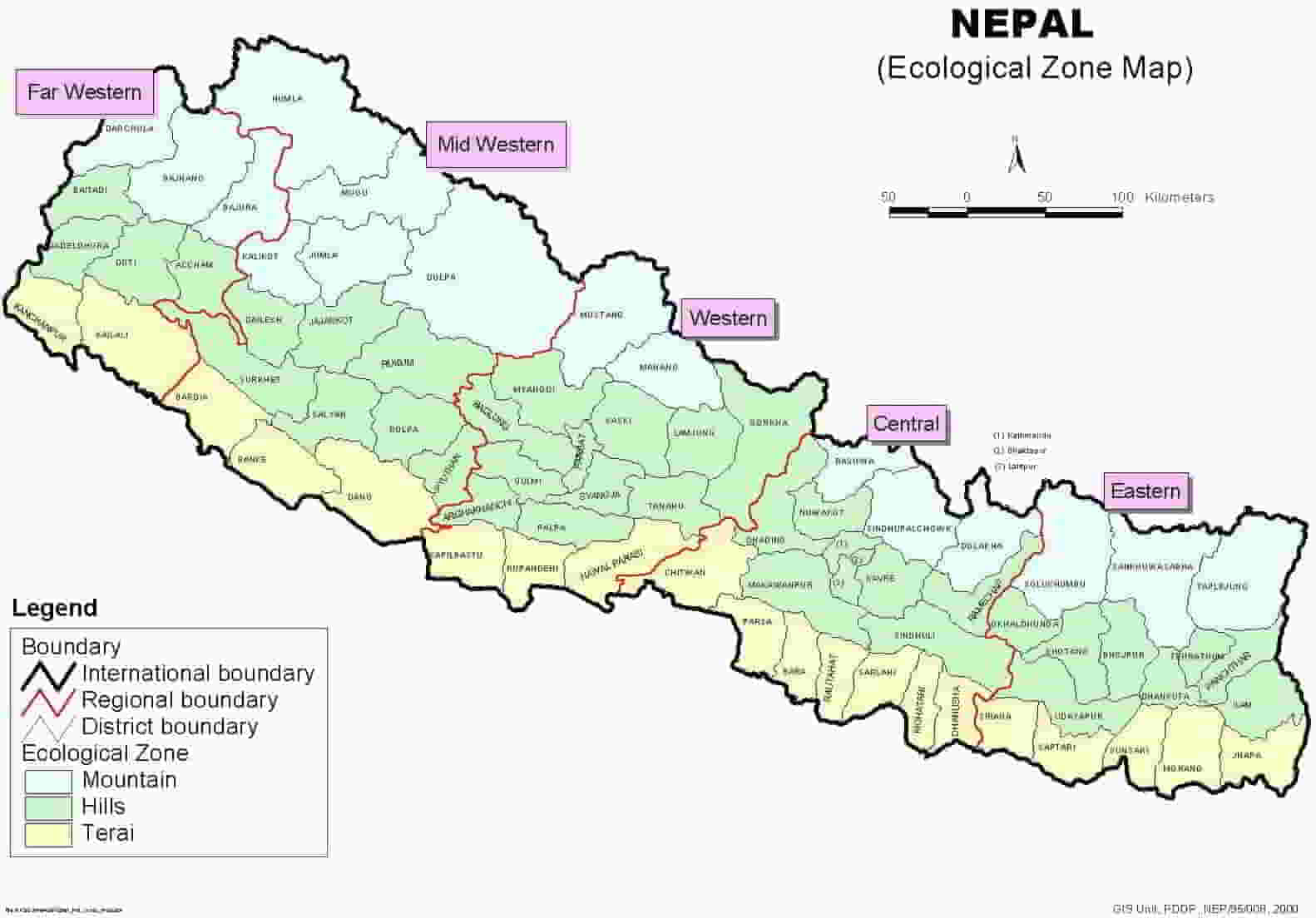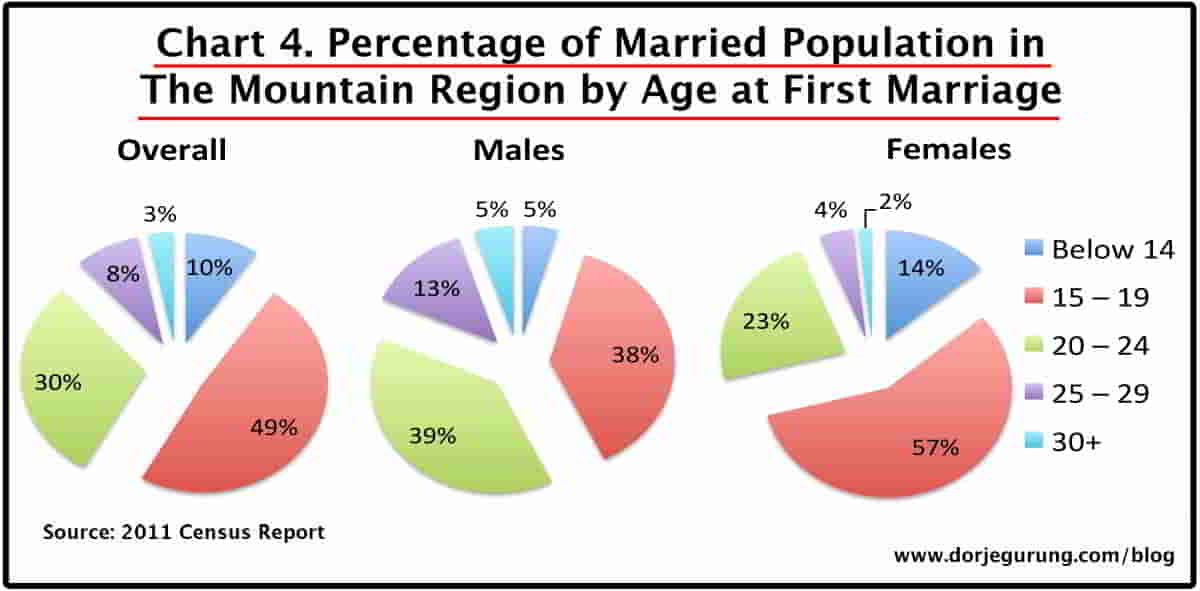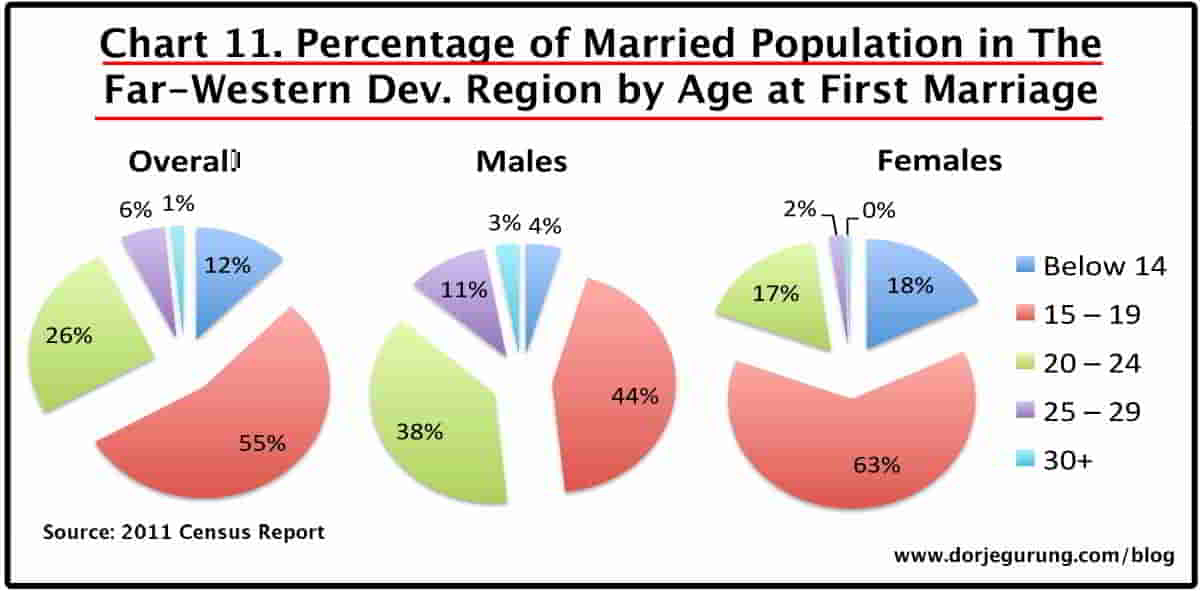That I am still NOT married is of great interest to and, sometimes, of great concern for people in Nepal. In my recent visit to Thangpalkot, it was again a topic of conversation with Maili “Didi,” the owner of the lodge we stayed at.
In a country where a mere 5% of males above 30 get married for the first time (see image at the top), incidence of middle-aged men getting married is insignificant. That naturally is of interest to — and business of — Nepalese and even a subject of jokes, while elsewhere I have lived that might have been too intrusive or even rude! I, however, don’t mind.
But, in this blog post, I have decided to turn the tables and ask questions about the marriage of the rest of Nepal, focusing particularly on girls and women. How many and who in Nepal get married? Plus, when and why?
I thought I had some of the answers. Marriage in Nepal, to me, is an arrangement — in every sense of the word — mostly for the convenience of the men, and a given! Also, it seems to me that marriage to a lot of Nepalese is a “right of passage” which they take part in quite easily and willingly, few question it. Hell, for the longest time, that is what I thought I needed/wanted to do too.
And naturally, an unmarried middle-aged man is fodder…for chatter!
It has also always seemed to me that, first, most Nepalese got married, and that, second, they did so before turning 30. I also knew that, two of the many reasons behind that were our very patriarchal society, and our culture and tradition. But I made two unexpected, therefore surprising, discoveries looking at numbers.
The first discovery was how bad the pattern in marriage age for the females were (see image at the top).
The second discovery was the very high rate of unmarried men and women in the country (see image below).
Here are some general observations about females:
- Approximately 5 out of 15 girls never marry;
- Of the 10 that marry, 1 gets married/married off before she turns 15;
- Approximately 7 out of the 10 get married/married off before she turns 20;
- A staggering 95% of those that get married/married off before she turns 25.
(Incidentally, a Nepalese bridegroom is most often older than the bride, hence the difference in relative numbers in each age group between the two sexes, as in most countries.)
To be sure, the practice of marrying off young girls varies from one part of the country to another. So, before I delve into the why of the practice, some more charts showing the pattern in different parts of the country.
First, the pattern among urban and rural population.

 While there is a difference between the two, significant number of girls even in urban centers are getting married/married off at a very young age! Incidentally, an overwhelming majority of the population — 83% — live in the countryside.
While there is a difference between the two, significant number of girls even in urban centers are getting married/married off at a very young age! Incidentally, an overwhelming majority of the population — 83% — live in the countryside.
The pattern, of course, varies by Ecological Belt and by Development Region obviously because of difference in culture, tradition, life style, size of population, level of education, poverty level among other things.
To orient you to the geography and the regions of the country to begin with, here is a map identifying the different Ecological Belts and the Development Regions.

Here are the charts for the three Ecological Belts: Mountain, Hill and Terai respectively.

 Just one observation:
Just one observation:
At almost 80% (4 out of 5 girls), a very high percentage of girls in Terai get married/married off before they turn 20. That of course says something about the region — its culture, its education level, its poverty level etc.
Here are the charts for the five Development Regions.




 Mid-Western Development Region and Far-Western Development regions, by virtue of them being considerably less developed, partly because of the Central Government’s near complete disregard for them, their rate of child-marriage is much higher (as is some other archaic practices like Chaupadi). These two are the same regions where, in a 2010 survey, the level of acceptance of domestic abuse/violence from husbands and mother-in-laws was found to be around 50%.
Mid-Western Development Region and Far-Western Development regions, by virtue of them being considerably less developed, partly because of the Central Government’s near complete disregard for them, their rate of child-marriage is much higher (as is some other archaic practices like Chaupadi). These two are the same regions where, in a 2010 survey, the level of acceptance of domestic abuse/violence from husbands and mother-in-laws was found to be around 50%.
I also had a look at the pattern in all fifteen Eco-Development Regions.
In every single one of them, 60-81% of married women, got married/married off before they turned 20, except one which I’ll come back to later after a brief discussion of why I think Nepalese girls get married/married off so young.
Many cultures around the world have used marriage to control girls and women throughout mankind’s history. Some cultures still do; Nepal, I knew, was one of them. I just didn’t know it was so widespread and prevalent! (Could that be part of the reason for such a significant number of females never marrying?)
[bctt tweet=”Nepalese society uses marriage to control girls and women. #Nepal #ChildMarriage” username=”Dorje_sDooing”]
What does a Nepalese girl younger than 20 know about married life?! Do they know what they are getting into?!
But that’s hardly the point. In the highly patriarchal society of Nepal, which views girls and women as a potential source of dishonor to the family, often giving away a daughter’s hand in marriage is about taking steps to reduce that.
And if we are honest with ourselves, we don’t really have to ask what all that has done — and continues to do — to our society and our country.
With men exerting so much control over the lives — and determining the fate — of significant proportion of the other half of the population of the country, we have struggled immensely to make social and economic progress. We have ended up a society where the biggest killer of girls and women has been suicide for a while.
And recently, we have discovered that our leadership, consisting mostly of men, is our biggest disaster, bigger than the two almost back-to-back recent disasters — one natural, an earthquake, the biggest natural calamity in living memory, and the other man-made, an economic embargo. As happens with every disaster, girls and women suffer disproportionately more than boys and men. And they are continuing to suffer more; you just have to visit the villages to see that.
So what’s the solution?
Education of girls makes a HUGE difference. (See Women…Not Wee Men for more.)
COMMITTED has been doing what it can on that front by supporting the education of girls in our project site, and a graduate of our project site as well as participating in Run To Stop Child Trafficking awareness campaign etc. I have personally supported the education of a girl by raising funds to send her to a UWC for instance.
Returning to the only Eco-development Region where girls getting married/married off before 20 is considerably lower than in the rest and my marital status, which got me writing this post in the first place….
The Region is no other than Western Mountain, where the percentage of girls getting married/married off before 20 is only 31%.  Western Mountain Eco-development Region, as you can see from the map of Nepal above, consists of only two districts: Manang and Mustang, the district I am from. Something of note however is that the population of the region, at just a little over 10K, is just a small fraction of the other Eco-development Regions.
Western Mountain Eco-development Region, as you can see from the map of Nepal above, consists of only two districts: Manang and Mustang, the district I am from. Something of note however is that the population of the region, at just a little over 10K, is just a small fraction of the other Eco-development Regions.
As for my marriage, if the statistics for my people — people of Mustang — is anything to go by, at 14%, the rate of males over 30 getting married for the first time there is almost three times as prevalent as at the national level and even higher than in urban centers! Except of course, I live in Kathmandu and NOT in Mustang! 🙁
What do you think?
* * * * * * * *
Reference:
National Population and Housing Census 2011.
Nepal Multiple Indicator Cluster Survey 2010: Mid- and Far-Western Regions.


